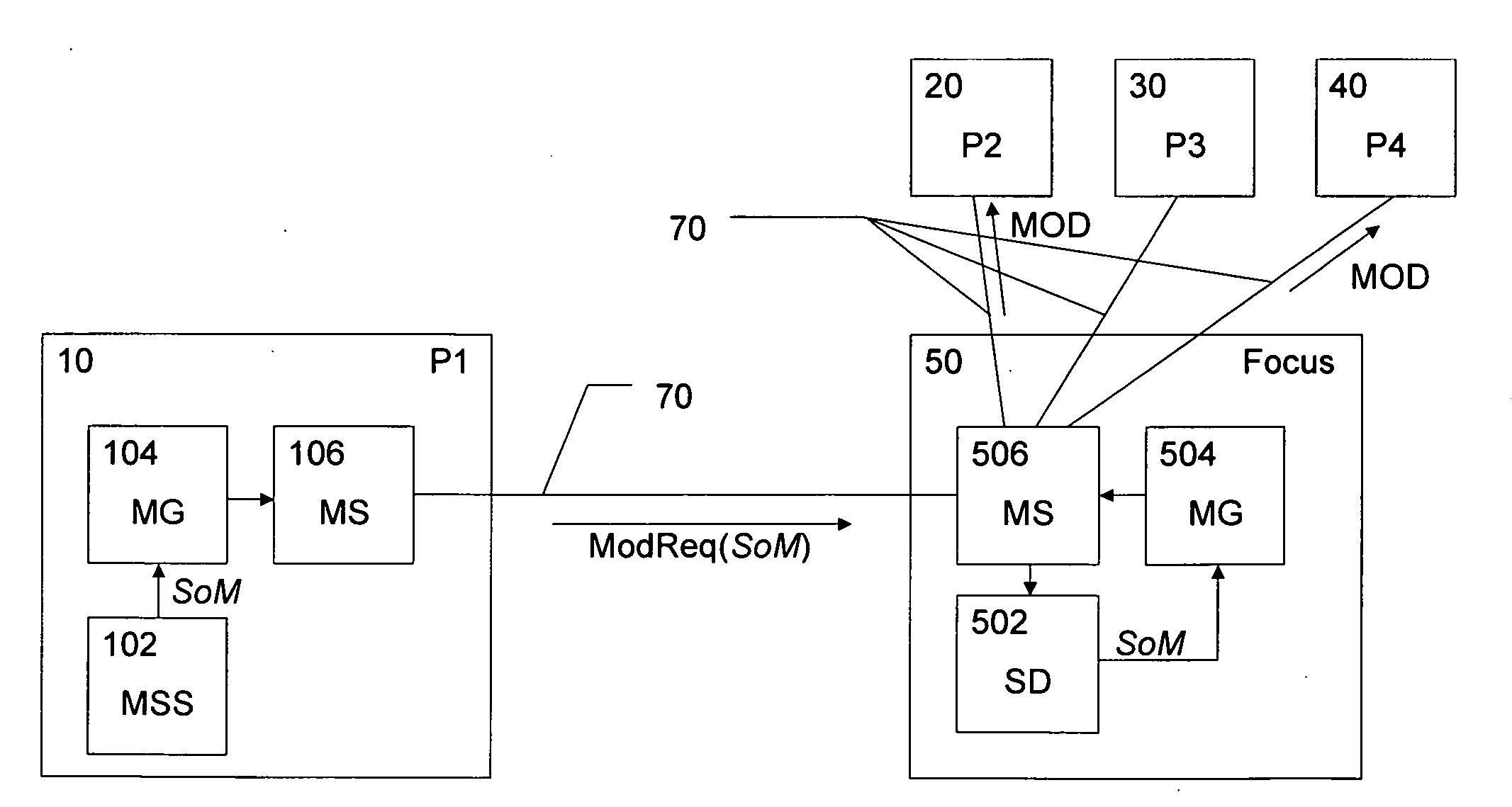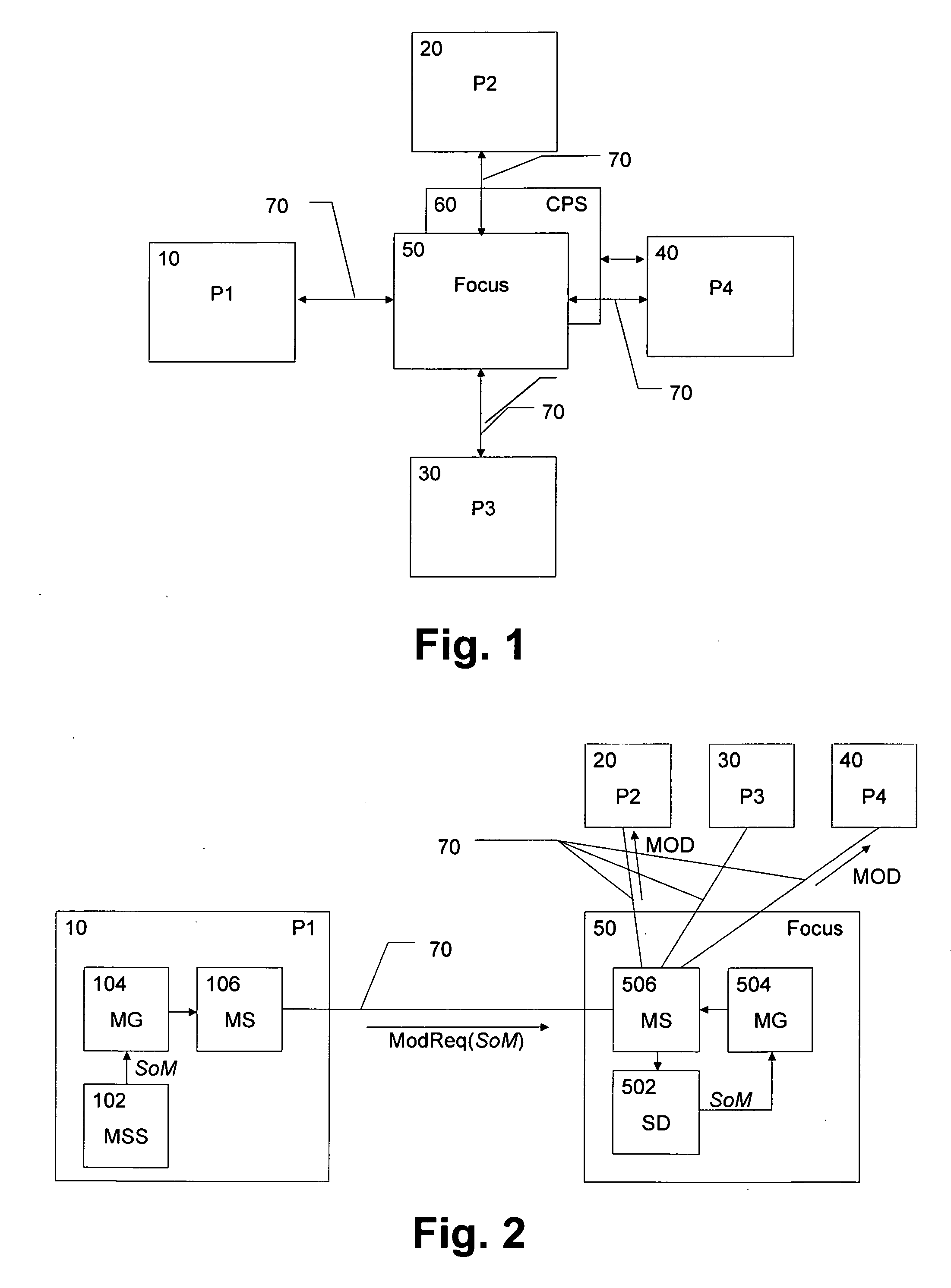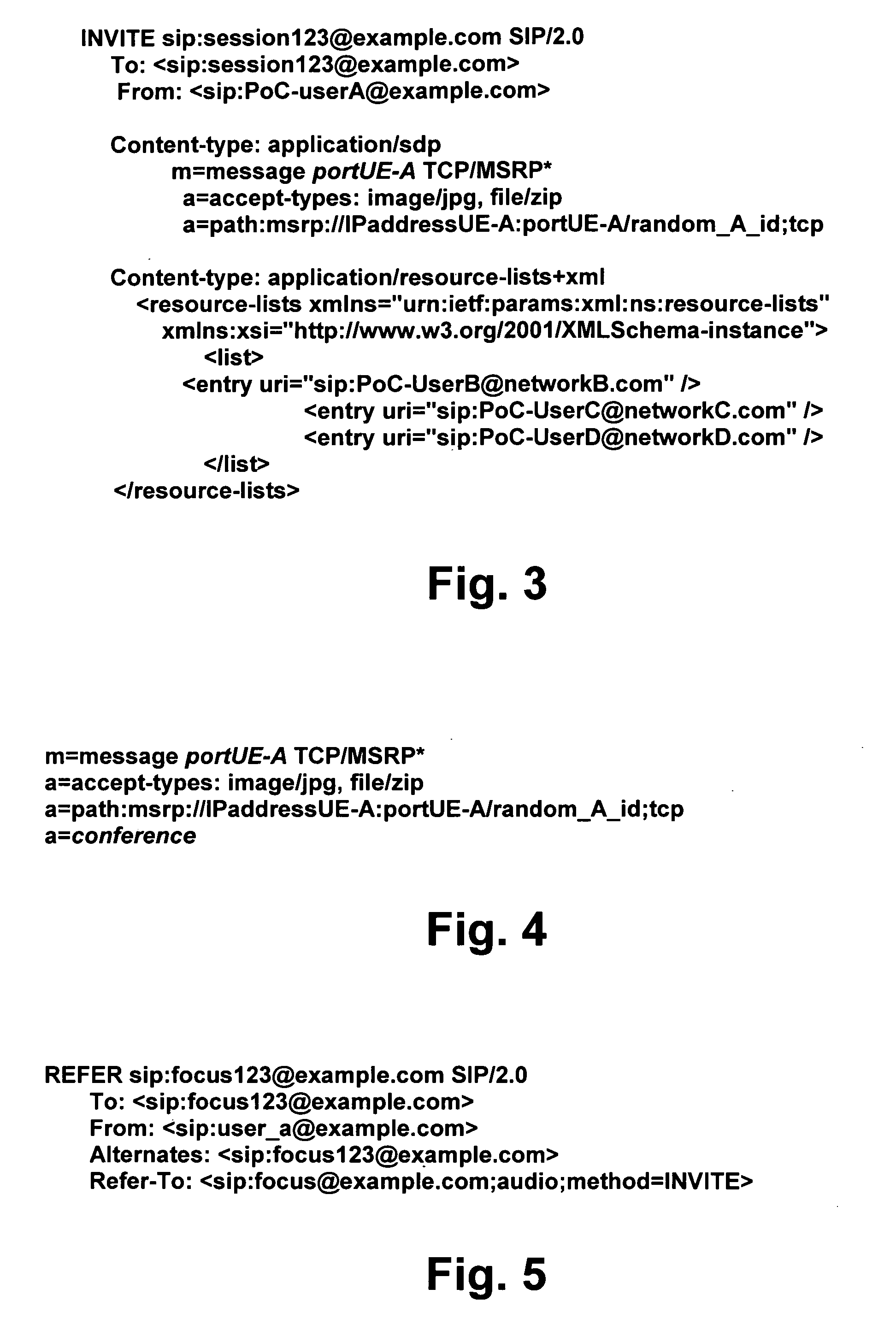Third-party session modification
a third-party and session technology, applied in the field of third-party session modification, can solve the problems of insufficient xcon work, central control point no means to know, and slow xcon work, and achieve the effect of simple and flexible manner and session manipulation
- Summary
- Abstract
- Description
- Claims
- Application Information
AI Technical Summary
Benefits of technology
Problems solved by technology
Method used
Image
Examples
first embodiment
[0063]In the first embodiment, a new SIP header e.g., Media-Handling (Conference / Client) is introduced. Since one INVITE request can be used for modifying several medias, the SIP header parameter value is applied to all medias negotiated in the re-INVITE. In case some media modification of the re-INVITE request is aimed for the whole conference and some for the participant's own media or call leg only, the participant needs to send a separate re-INVITE request.
[0064]As another option for the first embodiment, some already existing SIP header, e.g., the Request-Disposition SIP header could be utilized for conveying the scope information SoM.
[0065]In the second embodiment, a SIP URI-list service is proposed for conveying the scope information SoM. In this case, the SIP INVITE / UPDATE request contains the SIP URI-list as request payload. The SIP URI-list is used to tell to which participants the media modification should be applied. The SIP URI-list can also contain the conference URI i...
second embodiment
[0067]FIG. 3 shows an exemplary listing of a re-INVITE request which contains two bodies, SDP and SIP URI-list for a PoC service.
[0068]In the third preferred embodiment, a new SDP attribute e.g., Conference / Client-only or media-treatment:Conference / Client-only, is introduced for conveying the scope information SoM, e.g., as an a-line value.
[0069]FIG. 4 shows a listing of an example of the proposed SDP attribute. In this case new a-line value “conference” indicates that this media modification applies for the whole conference and a new value “client-only”, indicates that the media modification shall be applied only between this particular requesting participant and the conference server.
[0070]This new SDP attribute is more flexible, since the participant can include several medias into the same re-INVITE and request different handling for each of the medias. The conference server, i.e. the focus 50, can negotiate own leg modifications immediately, while new media for the whole confe...
fourth embodiment
[0071] the REFER method as specified in IETF RFC 3515 is used as session modifying request, to which the scope information is added.
[0072]In particular, a new SIP header “Alternates” could be introduced (as compared to “Replaces”). This header is used in the SIP REFER method to notify the referee, i.e. the focus 50, that the INVITE sent due to the reception of the REFER is supposed to modify the existing dialog, instead of creating a new dialog. In addition, the callee capabilities could be used along the contact URI in the Refer-to header in the REFER method. These callee capabilities together with the new Alternates header indicate to the focus 50 in what way the dialog should be modified.
[0073]As an additional option, the SIP URI list service could be used for REFER to generate the re-INVITE to all participants 10-40 of the conference session. With the SIP URI list service, it is also possible to request that re-INVITE is generated and sent to only some of conference participants...
PUM
 Login to View More
Login to View More Abstract
Description
Claims
Application Information
 Login to View More
Login to View More - R&D
- Intellectual Property
- Life Sciences
- Materials
- Tech Scout
- Unparalleled Data Quality
- Higher Quality Content
- 60% Fewer Hallucinations
Browse by: Latest US Patents, China's latest patents, Technical Efficacy Thesaurus, Application Domain, Technology Topic, Popular Technical Reports.
© 2025 PatSnap. All rights reserved.Legal|Privacy policy|Modern Slavery Act Transparency Statement|Sitemap|About US| Contact US: help@patsnap.com



